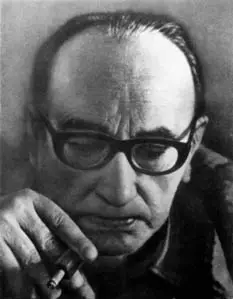 Mikhail Bakhtin, the founder of dialogism, has become very influential within the fields of literary theory and criticism, and in linguistics, political and social theory, philosophy and many other disciplines. In the 1960s, when Julia Kristeva introduced the term intertextuality, Bakhtin’s work was relatively unknown and much of it unpublished. One can say that Kristeva’s concept of intertextuality and the work of Bakhtin cannot be separated and, to understand intertextuality, a detailed look at Bakhtin’s theories is required.
Mikhail Bakhtin, the founder of dialogism, has become very influential within the fields of literary theory and criticism, and in linguistics, political and social theory, philosophy and many other disciplines. In the 1960s, when Julia Kristeva introduced the term intertextuality, Bakhtin’s work was relatively unknown and much of it unpublished. One can say that Kristeva’s concept of intertextuality and the work of Bakhtin cannot be separated and, to understand intertextuality, a detailed look at Bakhtin’s theories is required.
Bakhtin’s early writings were devoted to both ethics and aesthetics. Although he disagreed with the Russian formalists, who believed that a literary text was a crafted thing, the sum of its technical devices, at the same time he learned a great deal from the formalists. Bakhtin instead argued for the semantic aspects of literary work, saying that what mattered was not merely how a work was made, but what its meaning was. In particular, he stressed the importance of its meaning in the social and historical context.
His monograph entitled Estetika Slovesnogo Tvorchestva (1952-1953; Speech Genres, 1986), best exemplifies his theory of dialogism. His life-long insistence was that all linguistic communication occurs in specific social situations and between specific classes and groups of language-users: “The life of the word is contained in its transfer from one mouth to another, from one context to another context, from one social collective to another, from one generation to another generation. In this process the word does not forget its own path and cannot completely free itself from the power of those concrete contexts into which it has entered” (Bakhtin 1984: 201).
Associating with Pavel N. Medvedev and Valentin N. Volosinov, two Russian critics, Bakhtin developed an alternative to the Saussurean theory of language. They argued that language comes into being within social situations and is thus bound-up with specific social elements. They underlined the fact that language is utilized by individuals in specific social contexts. Language, seen in its social dimension and dynamics, is constantly reflecting and transforming class, institutional, national, and group interests.
The crucial concept in their theory is “utterance,” a word that reflects the human-centred and socially bound aspect of language. Language responds to previous utterances and to pre-existing patterns of meaning, but also promotes and seeks to promote further responses. Thus, Bakhtin’s understanding of what Kristeva called intertextuality is that one cannot recognize an utterance or even a written work as if it were singular in meaning, unconnected to previous and future utterances or words: “A word is a bridge thrown between myself and another. If one end of the bridge depends on me, then the other depends on my addressee. A word is territory shared by both addresser and addressee, by the speaker and his interlocutor” (Bakhtin and Volosinov 1986: 95).
No utterance or word is independent. All utterances depend on, or call to, other utterances. No utterance itself is singular. All utterances are shot through with other, completing and conflicting voices (Allen 2000: 18).
Resources:
- Allen, G. (2000) Intertextuality. London: Routledge.
- Bakhtin, M.M. (1984) Problems of Dostoevsky’s Poetics. C. Emerson (transl. and ed.), Minneapolis: University of Minnesota Press.
- Bakhtin, M.M., and V.N. Volosinov (1986) Marxism and the Philosophy of Language. L. Matejka and I.R. Titunik (transl.). Cambridge: Harvard University Press.
(Fragment from The Matrix and the Alice Books by Voicu Mihnea Simandan, p.20-21)
Photo source
My intertextual study The Matrix and the Alice Books looks at the way Lewis Carroll’s Alice’s Adventures in Wonderland and Through the Looking-Glass have influenced some of the ideas put forth by Andy and Larry Wachowski. The book is now available as a Kindle ebook too.


